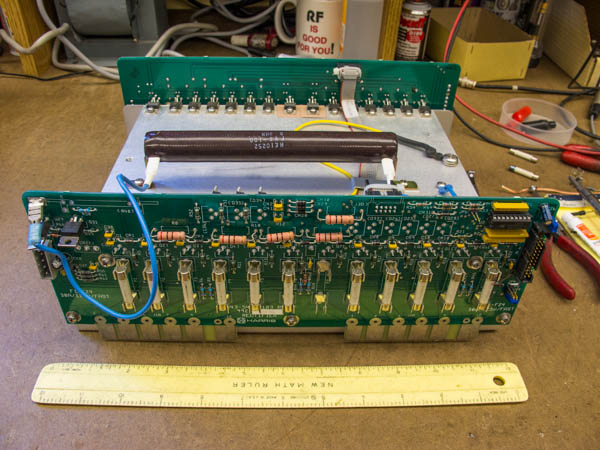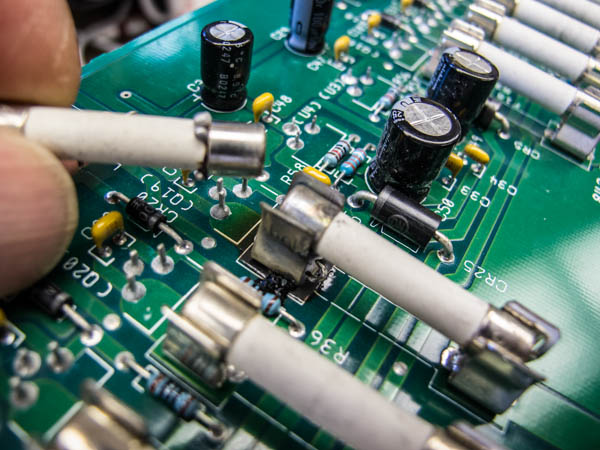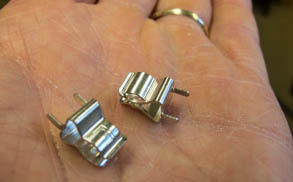 |
|
|
|
|
||||||||||
|
|
|
||||||||||
|
Technical
Tips from Mark W. Persons |
 |
Monday, July 16, 2013:
Another rectifier module
from a Harris Z10 (10 KW FM Transmitter).
A station on St. Thomas in the Virgin Islands owns it. This particular rectifier handles three-phase power. If you look closely, a fuse near the center on the circuit card on this side is missing. Let's find out why. |
 |
 |
|
(left photo) The fuse in a hand is one
that was in the fuse socket on the other side of the module. Yes,
a fuse has failed on this side too.
The fuses did not open because of a failed component in the circuit. Rather, the fuse overheated because of a poor electrical connection to a fuse clip. Sometimes the metal cap on the fuse turns a blue color when when running hot. Any fuse like that should be discarded because it is bound to fail soon anyway. These are 30 ampere fuses. Lots of current and a high chance of failure when the parts do not fit together tight. Best not to reuse one that had overheated. Instead use new clips for a repair, as shown above. |
 |
 |
|
Replacing a fuse clip often times requires removing an entire circuit card
with its 19 screws. A somewhat time consuming task. Three of the semi-conductor devices on this side needed to be kept insulated from the heat sink. Most of the devices are SCR's (Silicon Controlled Rectifiers). Above is a close-up of where a new fuse clip was soldered in. Heat from the original failure caused the green mask paint to flake off exposing the copper trace. Think through a technique for testing the SCR's without having to pull them out or put the rectifier assembly back in the transmitter. Installing a module in a transmitter can be a 45 minute job. Harris does not repair these, but charges about $2000 for new modules. |
|
The stories go on and on.
Stop in again sometime. I'll leave the soldering iron on for you.
|
|
Questions? Email Mark Persons: teki@mwpersons.com |